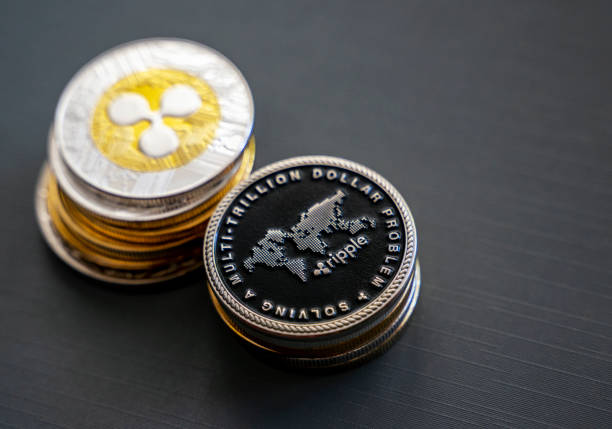Learn the essential steps to build your own crypto wallet in 2024, from defining features to ongoing maintenance.
The demand for secure and user-friendly crypto wallets continues to rise as cryptocurrencies become more mainstream. Creating a crypto wallet from scratch involves several crucial steps to ensure functionality, security, and a seamless user experience. Here’s a comprehensive guide on how to create a crypto wallet in 2024.
Table of Content
∘ 1. Define Wallet Type & Features
∘ 2. Design User Interface
∘ 3. Implement Security Measures
∘ 4. Develop Core Functionality
∘ 5. Blockchain Integration
∘ 6. Private Key Management
∘ 7. Transaction Processing
∘ 8. Wallet Backup & Recovery
∘ 9. Testing & Deployment
∘ 10. Ongoing Maintenance
1. Define Wallet Type & Features
The first step in creating a crypto wallet is to decide what type of wallet you want to build and what features it will offer. Wallet types include:
➤ Hot Wallets: These are connected to the internet, making them convenient for everyday transactions but potentially less secure.
➤ Cold Wallets: These are offline wallets that provide high security, ideal for long-term storage.
➤ Mobile Wallets: Wallets designed for mobile devices, offering ease of use and accessibility.
➤ Desktop Wallets: Software applications installed on a computer, providing a balance between security and convenience.
➤ Hardware Wallets: Physical devices that store private keys offline, offering the highest level of security.
Features to Consider:
👉🏼 Multi-currency support: Ability to store various cryptocurrencies.
👉🏼 User authentication: Implementing secure login methods.
👉🏼 Transaction history: Providing detailed transaction records.
👉🏼 QR code scanner: For easy transactions.
👉🏼 Push notifications: Alerts for transactions and security updates.
Planning Phase
During this phase, conduct market research to understand user needs and preferences. Define your target audience and their requirements. Create a detailed project plan outlining the features, technologies, and timeline for development.
2. Design User Interface
A well-designed user interface (UI) is crucial for user satisfaction. The UI should be intuitive, user-friendly, and aesthetically pleasing.
Key Considerations:
👉🏼 Simplicity: Ensure the interface is simple and easy to navigate.
👉🏼 Clarity: Use clear and concise labels and instructions.
👉🏼 Consistency: Maintain consistency in design elements across the wallet.
👉🏼 Accessibility: Design for accessibility to cater to all users, including those with disabilities.
Design Process
➤Wireframing: Create wireframes to outline the basic structure of the wallet.
➤ Prototyping: Develop interactive prototypes to visualize the user flow.
➤ User Testing: Conduct user testing to gather feedback and make necessary adjustments.
Tools like Figma, Sketch, or Adobe XD can be used for the design process.
3. Implement Security Measures
Security is paramount in crypto wallet development. Implementing robust security measures protects users’ assets from potential threats.
Security Measures:
👉🏼 Encryption: Encrypt sensitive data to prevent unauthorized access.
👉🏼 Two-factor authentication (2FA): Enhance security by requiring a secondary verification method.
👉🏼 Biometric authentication: Ensure secure access using fingerprint or facial recognition technology.
👉🏼 Secure code practices: Follow secure coding practices to minimize vulnerabilities.
👉🏼 Regular security audits: Conduct regular security audits to identify and fix potential weaknesses.
Compliance
Ensure compliance with relevant regulations and standards, such as GDPR for data protection and PCI DSS for payment security.
4. Develop Core Functionality
Develop the core functionality of the wallet, focusing on essential features that enable basic operations.
Core Features:
👉🏼 User Registration/Login: Secure user authentication mechanisms.
👉🏼 Dashboard: Displaying account balance and transaction history.
👉🏼 Send/Receive Crypto: Enabling users to send and receive cryptocurrencies.
👉🏼 Transaction Details: Providing detailed information about each transaction.
Development Process
➤ Backend Development: Implement server-side logic using programming languages like Python, Java, or Node.js.
➤ Frontend Development: Build the user interface with technologies like React, Angular, or Vue.js.
➤ APIs: Integrate APIs for blockchain interaction, exchange rates, and other functionalities.
Collaboration between backend and frontend developers is crucial to ensure seamless integration of functionalities.
5. Blockchain Integration
Integrating the wallet with the chosen blockchain(s) is a critical step. This allows the wallet to interact with the blockchain network to send and receive transactions.
Steps for Integration:
👉🏼 Select Blockchain: Choose the blockchain(s) you want to support (e.g., Bitcoin, Ethereum).
👉🏼 Node Setup: Set up and run a full node or use third-party APIs like Infura or Alchemy.
👉🏼 API Integration: Integrate blockchain APIs to interact with the blockchain network.
👉🏼 Smart Contract Interaction: For Ethereum or other smart contract platforms, ensure the wallet can interact with smart contracts.
Testing
Thoroughly test the integration to ensure smooth and reliable interaction with the blockchain. Use testnets for initial testing before deploying on the mainnet.
6. Private Key Management
Private key management is at the heart of a crypto wallet. Ensuring the security of private keys is crucial to protecting users’ assets.
Best Practices:
👉🏼 Key Generation: Generate private keys securely using reliable algorithms.
👉🏼 Key Storage: Store private keys securely using hardware security modules (HSMs) or encrypted databases.
👉🏼 Key Backup: Provide users with secure backup options for their private keys.
👉🏼 Key Recovery: Implement secure recovery mechanisms for lost or forgotten private keys.
Implementation
Use established cryptographic libraries and follow best practices for key management. Educate users on the importance of keeping their private keys secure.
7. Transaction Processing
Transaction processing involves sending and receiving cryptocurrencies. Make certain the process is secure, streamlined, and easy to use.
Key Steps:
👉🏼 Transaction Creation: Allow users to create and sign transactions.
👉🏼 Broadcasting Transactions: Broadcast signed transactions to the blockchain network.
👉🏼 Transaction Fees: Calculate and include appropriate transaction fees.
👉🏼 Transaction Confirmation: Provide real-time updates on transaction status and confirmations.
Optimization
Optimize transaction processing for speed and cost efficiency. Use techniques like transaction batching and fee estimation algorithms to enhance performance.
8. Wallet Backup & Recovery
Providing robust backup and recovery options is essential for user confidence and security.
Backup Options:
👉🏼 Mnemonic Phrases: Generate and provide a mnemonic phrase for backup.
👉🏼 Encrypted Backups: Offer encrypted backup options for enhanced security.
👉🏼 Cloud Storage: Allow users to store encrypted backups in cloud storage.
Recovery Process
Implement a straightforward recovery process that allows users to restore their wallets using their backup options. Ensure the process is secure and user-friendly.
9. Testing & Deployment
Thorough testing is crucial to ensure the wallet functions correctly and securely. Once testing is complete, deploy the wallet for public use.
Testing Phases:
👉🏼 Unit Testing: Evaluate individual components to verify they operate correctly.
👉🏼 Integration Testing: Test integrated components to verify they work together as expected.
👉🏼 System Testing: Conduct end-to-end testing of the entire wallet system.
User Acceptance Testing (UAT): Gather feedback from real users to identify any issues or improvements.
Deployment
Deploy the wallet to the appropriate platforms (e.g., mobile app stores, web servers). Ensure the deployment process is secure and follows best practices.
10. Ongoing Maintenance
Ongoing maintenance is essential to keep the wallet secure, up-to-date, and functioning smoothly.
Maintenance Tasks:
👉🏼 Regular Updates: Release updates to add new features, fix bugs, and improve security.
👉🏼 Security Patches: Apply security patches promptly to address vulnerabilities.
👉🏼 User Support: Provide ongoing support to assist users with any issues or questions.
👉🏼 Performance Monitoring: Monitor performance continuously and make optimizations as necessary.
Community Engagement
Engage with the user community to gather feedback, address concerns, and build a loyal user base. Regularly communicate updates and new features to keep users informed and engaged.
Conclusion
Creating a crypto wallet from scratch involves a detailed and methodical approach to ensure it is secure, functional, and user-friendly. By following these ten steps — defining the wallet type and features, designing the user interface, implementing security measures, developing core functionality, integrating with the blockchain, managing private keys, processing transactions, providing backup and recovery options, thorough testing and deployment, and ongoing maintenance — you can build a robust crypto wallet that meets the needs of your users in 2024 and beyond.
Incorporating the latest technologies and best practices, along with a user-centric design approach, will ensure your crypto wallet stands out in a competitive market. Whether you’re targeting everyday users, traders, or institutional investors, following these steps will help you create a wallet that is secure, reliable, and ready to meet the demands of the evolving crypto landscape.



















